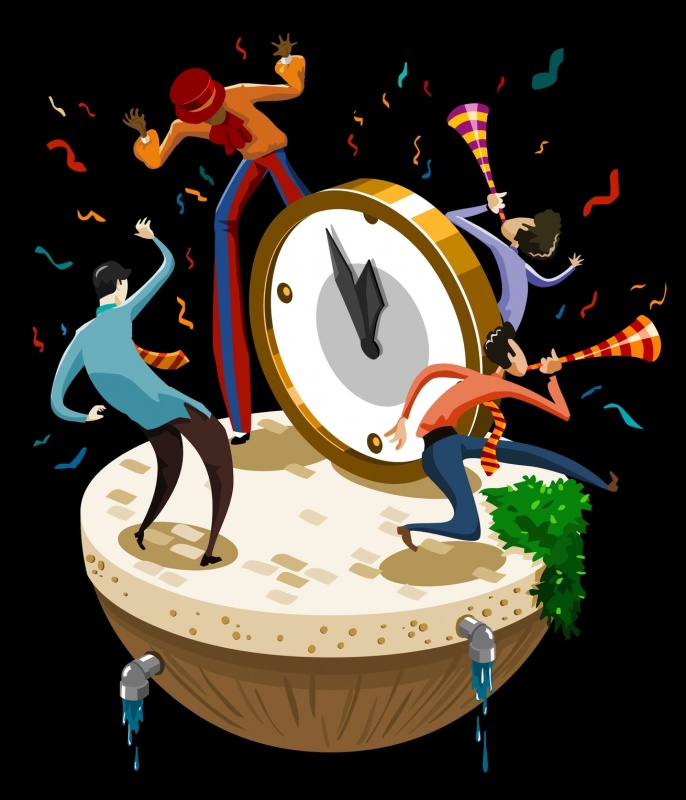Rupesh Dutta looks into the new trends in treatements – battle ailments using music, dance and painting. Asian Lite, the best newspaper for NRIs and Indian diaspora will carry regular Health Features
 How about a prescription for dance, music and mimicry to fight and overcome trauma associated with ailments like cancer, Alzheimer’s and even heart strokes? Fret no more over a huge list of medicines, as “expressive art therapy” comes to your rescue.
How about a prescription for dance, music and mimicry to fight and overcome trauma associated with ailments like cancer, Alzheimer’s and even heart strokes? Fret no more over a huge list of medicines, as “expressive art therapy” comes to your rescue.
Expressive arts therapy or creative arts therapy is the use of the arts as a form of therapy, based on the assumption that people can be healed through use of imagination and the various forms of creative expressions.
“Expressive arts therapy helps improve the mental, emotional and social conditions of patients. Its well-established soothing power has a unique link to our emotions, which is extremely effective in reliving the stress level of the patients. It therefore helps in curing the illness,” Archana Singh, research scholar and art therapist, told IANS.
It is because of such a therapy that 22-year-old Zubin Sarkar’s life was transformed.
Sarkar, who was detected with brain cancer two months ago, soon found his memory fading and stopped recognising his family members.It was only after expressive arts therapy sessions – where Sarkar took painting classes – came to his rescue that things changed for the better.
According to Singh, the images drawn by patients at such sessions help therapists understand their psychology better.
“The images become significant in enhancing verbal exchange between the person and the therapist. It also helps in achieving insight, resolving conflicts, solving problems, and formulating new perceptions that in turn lead to positive changes, growth, and healing,” Singh told IANS.
“In case of cancer, the strong emotions that people experience are often difficult to express in words. But by expressing your feelings, you allow your loved ones to know what you are experiencing to some extent and help them provide comfort,” she added.
A week-long session of expressive therapy, which may cost around Rs.3,000-4,000 per week, at times, may also allow patients to express emotions they did not even know they had, said Singh.
With its main motive of helping patients by providing them with social support, improved mental health conditions and keeping them away from sorrow and depression, expressive art therapy is especially beneficial for cancer patients.
“Art therapy can be used in experiential ways like viewing paintings at a museum or in a book; or in creative ways such as in painting, drawing, sculpting and beading,” Singh said.
The main purpose is to allow the patients to express their feelings, and hopefully reduce stress in the process, she noted.
Indu Bansal, senior consultant, oncology at Paras Hospital, agreed with Singh, saying the therapy helps bring peace to the patient’s mind.
“For patients suffering from serious diseases, treatment through medical, surgical or radiotherapy all are exceptionally stressful. Their battle is not only against their body but also against the side effects, the probability of the treatment’s success rate and other burdens,” Bansal told IANS.
“It has been medically proven that such therapies help in maintaining composure and concentration.”
Preeti Jain, consultant oncologist at Gurgaon-based Columbia Asia hospital, said that for cancer patients, counselling and support are essential.
“Expressive arts therapy helps in counselling. It has been scientifically proven that when cancer patients took part in music therapy sessions, they experienced less pain and nausea,” Jain told IANS.
Before the sessions, patients rated their pain and nausea as “severe”, but after the sessions, it came down to being “moderate”.
Explaining music therapy, which is part of expressive art therapy, Jain said: “It has already been used in medical settings, such as mental health services and hospices, for terminally ill patients to decrease their perceptions of pain and depression. It also helps boost the feeling of relaxation.”
Jain added that such therapies are appreciated by medical practitioners as they help patients face the trauma.